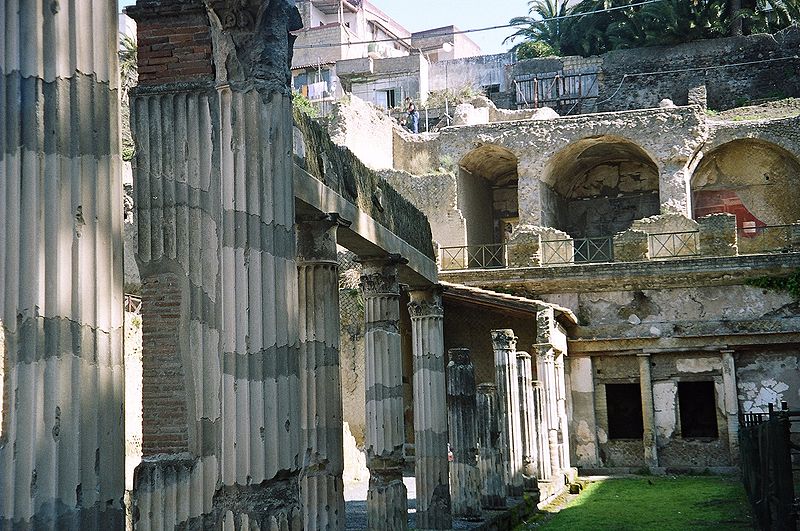It’s hard to get to, there are no hotels and not only are there no decent restaurants or cafés there’s no commerce at all. No one lives there and there’s no night life and the last time anyone made a romantic connection in this town was over 2000 years ago. And in spite all that Herculaneum is an unmissable and yet often overlooked city treasure of southern Italy.
In fact the obvious weaknesses of Herculaneum as a resort destination are unrelated to why this astonishingly well-preserved pre-Christian city is left off itineraries of Italy’s southern Campania region, except in that it shares them with its far more well-known sister city in misery, Pompeii.
Like Pompeii, Herculaneum was caught off-guard and in a matter of weeks completely buried by the eruption of Mt Vesuvius in 79AD and frozen in geological aspic until 1738 when they were excavated to reveal an unparalleled insight into day-to-day Roman life. A coating of porous volcanic ash protected the buildings and pottery and erotic frescoes and — sadly — people and impeccably preserved them to a degree that in person almost defies credibility. The houses are standing, the streets are paved with unbroken cobble stones, the frescoes have retained much of their colour and all of their hilariously oversized penises and there are kegs in the wine store.
Unlike Pompeii, the relative distance of Herculaneum from the volcano meant that it received a lighter rain of ash compared to the heavy coat which collapsed the roofs and second-stories of most of the buildings of the much larger city. Then both cities were flooded with the hot mud that would eventually carbonise the furniture and floors and rafters that, in the case of Herculaneum, held up the roofs. Consequently Herculaneum remains almost entirely intact and the effect is spooky and moving and melancholy in a way that a ruin just cannot be.
If you’re in the Campania region then you’ve almost certainly had to endure the shithole of a nightmare of a deliberate waste of potential that is Naples so you should make as much of the visit as you can and see both Pompeii and Herculaneum but if you’ve only got time for one see the smaller and better preserved and less crowded Herculaneum. Note, however, that both cities but particularly Herculaneum at the moment have closed important sections for preservation work.
You get to both sites by train from the depressing and heartbreaking Naples or the charming and pleasant seaside town of Sorrento, to which you get from the depressing and heartbreaking Naples.



